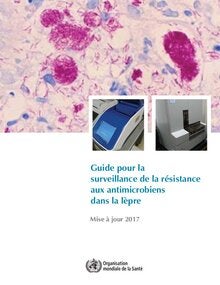Objectives
This document aims to guide countries on how to test for drug resistance in leprosy. It highlights the clinical, field and laboratory support systems that need to be put in place to undertake this activity.
Antimicrobial resistance (AMR) is one of the key areas of intervention of the Global Leprosy Strategy 2016–2020, under its Pillar II “Stop leprosy and its complications”. Under this Strategy, all countries that detect leprosy are expected to set up a system to allow testing for AMR either in a national laboratory or in a laboratory located abroad.
This guide aims to promote the use of a twofold standardized approach:
-
(1) to detect primary and secondary drug resistance to antileprosy drugs, namely, rifampicin, dapsone and ofloxacin;
-
(2) to standardize reports related to the results of testing done and on patients’ outcomes of treatment.
The availability of data on drug resistance in leprosy will allow global, national and subnational monitoring of drug resistance trends over time among new and retreatment cases of leprosy (see definitions in Section 5.2). It would also help to identify risk factors for drug resistance (age, sex, area of residence, patient’s category/type).
The target audience for the updated guide consists of managers of national leprosy programmes, clinicians and personnel at referral facilities and sentinel sites, laboratory coordinators and technicians working in leprosy, as well as consultants working in the field of leprosy and of neglected tropical diseases (NTDs).
|

